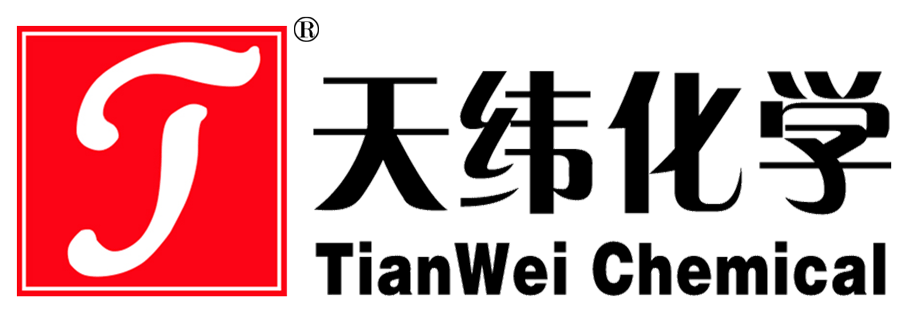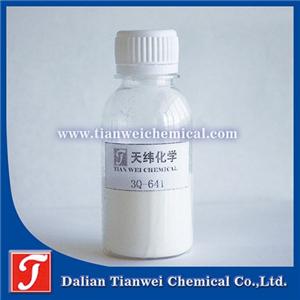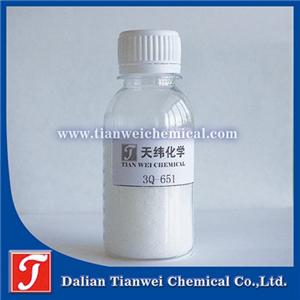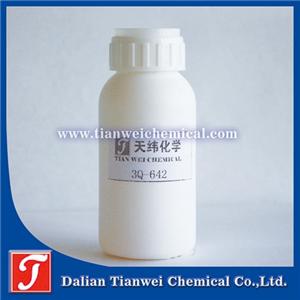-
The effect of silver ion antibacterial agent on PVC crystal tablecloths
The effects of using silver ion antibacterial agents in PVC crystal tablecloths are mainly reflected in the following aspects: Highly effective antibacterial and bacteriostatic properties Silver ion antibacterial agents destroy the structure of microorganisms by releasing silver ions, thereby inhibiting the growth and reproduction of bacteria, molds and other microorganisms. Its mechanism of action includes:
04-12-2025 -
Water-based textile coatings, bactericidal and preservative agents, have stable performance in extending service life
Water-based textile coating preservatives and bactericides are chemical additives used in water-based textile coatings. They can effectively kill or inhibit microorganisms (including bacteria, fungi and algae, etc.) in the coatings, prevent the coatings from being contaminated and decaying, thereby extending the service life of the coatings and maintaining their stable performance.
04-11-2025 -
The Application of Antibacterial Masterbatch in TPU Cast Film
The application of antibacterial masterbatches in TPU cast films mainly lies in endowing TPU cast films with antibacterial properties, expanding their application fields, and enhancing the added value and market competitiveness of the products. The following is a detailed introduction from four aspects: the characteristics of antibacterial masterbatches, their application methods in TPU cast films, application effects, and application fields
03-11-2025 -
Introduction to Antibacterial agents for injection-molded cane handles
The antibacterial agents for the handles of injection-molded walking sticks can be inorganic silver-based antibacterial agents, organic quaternary ammonium salt antibacterial agents or nano zinc oxide antibacterial agents. The specific introduction is as follows: Inorganic silver-based antibacterial agents Antibacterial principle
20-10-2025 -
Water-based textile sizing antibacterial and antifungal agent, high-temperature resistant, long-lasting and effective
It has good compatibility with water-based slurries (such as acrylate, polyvinyl alcohol, starch) and does not affect the viscosity, fluidity and other properties of the slurry. It is applicable to various processing techniques such as dip rolling, coating and spraying. Ii. Working Principle
17-10-2025 -
The function of adding antibacterial agents to makeup brushes
The core function of adding antibacterial agents to makeup brushes is to inhibit bacterial growth, protect skin health, and extend the lifespan of the tools. It destroys the structure of bacteria through chemical or physical means, reduces skin problems caused by contamination of makeup tools, and at the same time lowers the wear and tear on the bristles due to frequent cleaning. The following is the specific analysis:
07-10-2025 -
Detergent preservatives Effectively controls microorganisms
Among household cleaning products, dishwashing liquid is a powerful assistant in removing grease stains from tableware and kitchen utensils. However, due to the large amount of water and organic nutrients in its composition,
01-10-2025 -
The makeup sponge, beauty egg and antibacterial agent provide long-lasting antibacterial protection for skin health
Sponge beauty egg antibacterial agent is a functional ingredient added to beauty eggs (sponge material makeup tools). Its core function is to reduce the risk of skin infection caused by tool contamination by inhibiting or killing bacteria, fungi and other microorganisms, while extending the service life of beauty eggs
28-09-2025 -
Transparent plastic antibacterial masterbatch, no impact on transparency, good dispersion
Medical and health care field: transparent PC/PS infusion set shells, syringe push rods, medical transparent catheters, oral care appliances (such as transparent dental kit cases) (reducing the risk of cross-infection of bacteria in the medical environment, and must comply with medical-grade regulations);
10-09-2025 -
Introduction to Silicone Antibacterial Agent: Anti-yellowing Long-lasting Antibacterial
Antibacterial agent components (such as silver ions, zinc ions) come into contact with the cell membranes of microorganisms, destroying their structure or enzyme activity and preventing microbial reproduction (commonly found in food-grade and medical-grade silica gel). Sustained-release antibacterial: Some organic antibacterial agents (such as specific quaternary ammonium salts) will slowly release antibacterial components, forming an "antibacterial layer" on the surface of silicone, continuously inhibiting the growth of microorganisms (mostly used in daily industrial silicone products). From the perspective of component classification, the common silicone antibacterial agents mainly fall into the following three categories, catering to the needs of different scenarios: Type characteristics, applicable scenarios
29-08-2025




